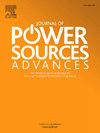Investigating PFAS emissions of light- and heavy-duty fuel cell electric vehicles
IF 4.6
Q2 CHEMISTRY, PHYSICAL
引用次数: 0
Abstract
Per- and polyfluoroalkyl substances (PFAS) have been linked to different adverse health effects, highlighting the need to address the examination of all potential emission sources. This also includes applications that are used in key components of the hydrogen economy using proton exchange membranes, e.g. PEM fuel cells. This study analyzes PFAS concentrations in product water from two light- and one heavy-duty fuel cell electric vehicles (FCEV), identifying two to five distinct PFAS (including 6:2 FTS, PFBuA, PFHpA, PFHxA, PFOA, HFPO-DA, and PFPeA) in each sample. However, at this juncture, it is not yet possible to make a well-founded statement as to which components (e.g., MEA or BOP) release these substances.
The PFAS concentration was found to be low overall in light-duty vehicles, while in heavy-duty vehicles, elevated levels were observed. Despite these findings, the product water from all vehicles remains within the non-critical range according to current German national PFAS guidelines. However, the results highlight the need for further research and effective strategies to mitigate PFAS emissions from PEM fuel cells in the future.
调查轻型和重型燃料电池电动汽车的PFAS排放
全氟烷基和多氟烷基物质与不同的有害健康影响有关,突出表明有必要审查所有潜在的排放源。这也包括在氢经济的关键部件中使用质子交换膜的应用,例如PEM燃料电池。本研究分析了两辆轻型和一辆重型燃料电池电动汽车(FCEV)产品水中的PFAS浓度,在每个样品中鉴定出两到五种不同的PFAS(包括6:2 FTS、PFBuA、PFHpA、PFHxA、PFOA、hfpos - da和PFPeA)。然而,在这个关键时刻,还不可能对哪些组件(例如,MEA或BOP)释放这些物质作出有充分根据的声明。研究发现,轻型车辆的PFAS浓度总体较低,而重型车辆的PFAS浓度则升高。尽管有这些发现,但根据目前德国国家PFAS指南,所有车辆的产品水仍处于非临界范围内。然而,研究结果强调,未来需要进一步的研究和有效的策略来减少PEM燃料电池的PFAS排放。
本文章由计算机程序翻译,如有差异,请以英文原文为准。
求助全文
约1分钟内获得全文
求助全文

 求助内容:
求助内容: 应助结果提醒方式:
应助结果提醒方式:


